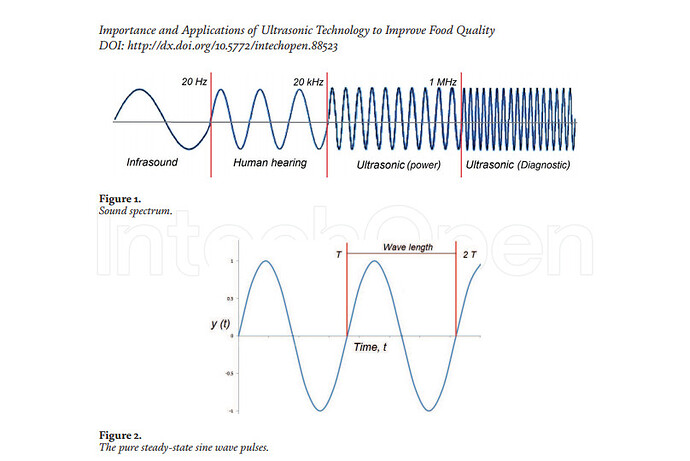Nutritional value and quality of food products are very important for a healthy life of human beings. Various modern thermal and nonthermal application technologies such as pulsed light, pulsed electric field, high and low hydrostatic pressure, microwave, and ohmic heating have been used to improve food products characteristics. In recent years, ultrasonic applications have been used for food processing.
The ultrasonic is defined as sound waves with a frequency exceeding the human hearing limit. Based on the frequency range of ultrasonic waves, it can be used in many industrial applications including the processing of food. Applications of high-power ultrasonic with low frequency aim to improve the quality of food products. Low-power ultrasonic with high-frequency applications are used for nondestructive quality evaluation of physicochemical properties of food.
The most important advantages of ultrasonic technologies are the low cost of food processing, low power consumption, simplicity compared to other technologies, suitability for the treatment of solid and liquid food, and environmental safeness and friendliness, thus becoming a promising technology for monitoring and improving quality of food products. The main objective of this chapter is to provide an overview of the principal and recent applications of ultrasonic waves to improve food product quality.
Read the full article.
Importance and Applications of Ultrasonic Technology to Improve Food Quality.pdf (681.0 KB)
Maged E.A. Mohammed and Mohammed R. Alhajhoj (September 6th 2019). Importance and Applications of Ultrasonic Technology to Improve Food Quality [Online First], IntechOpen, DOI: 10.5772/intechopen.88523. Available from: https://www.intechopen.com/online-first/importance-and-applications-of-ultrasonic-technology-to-improve-food-quality
